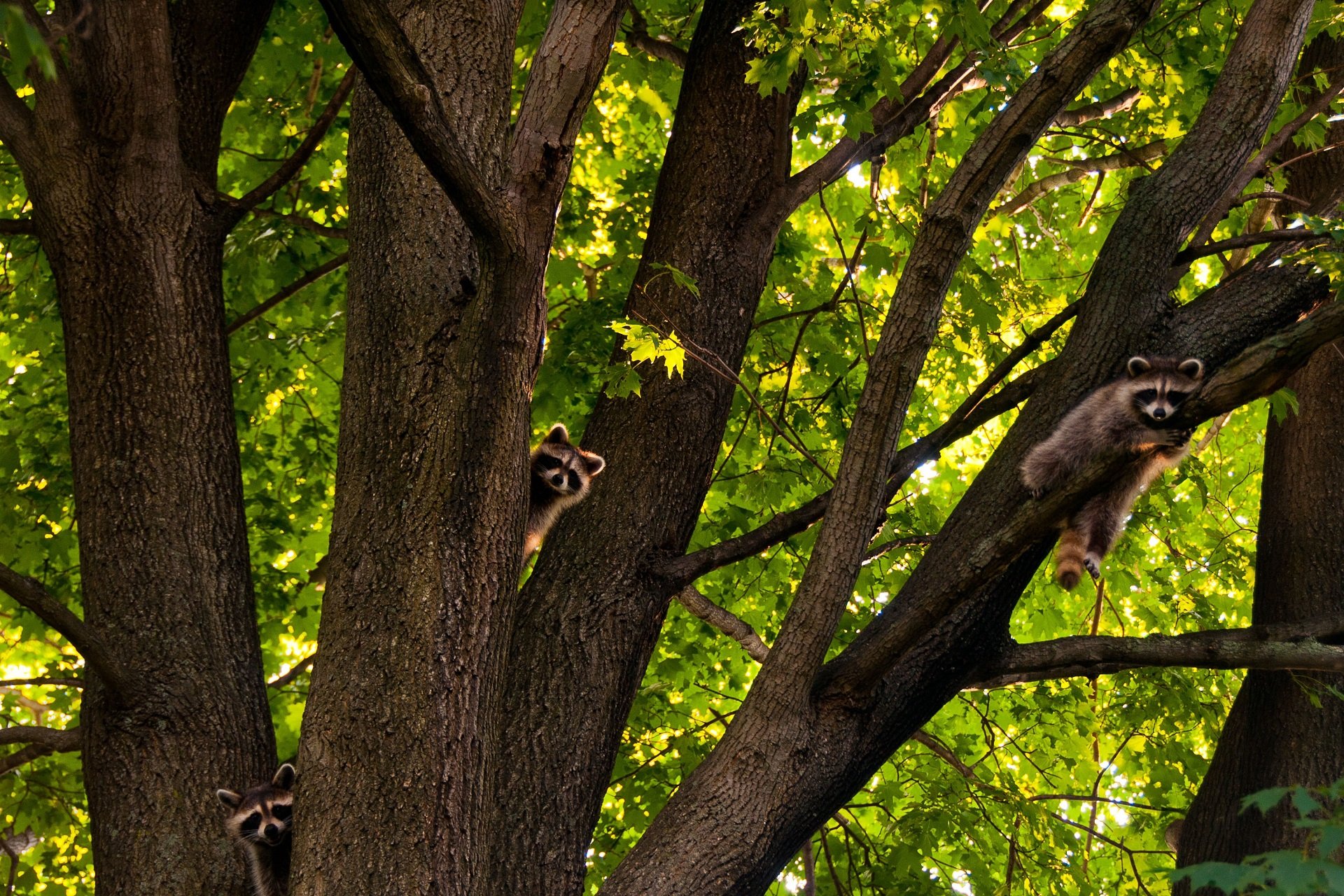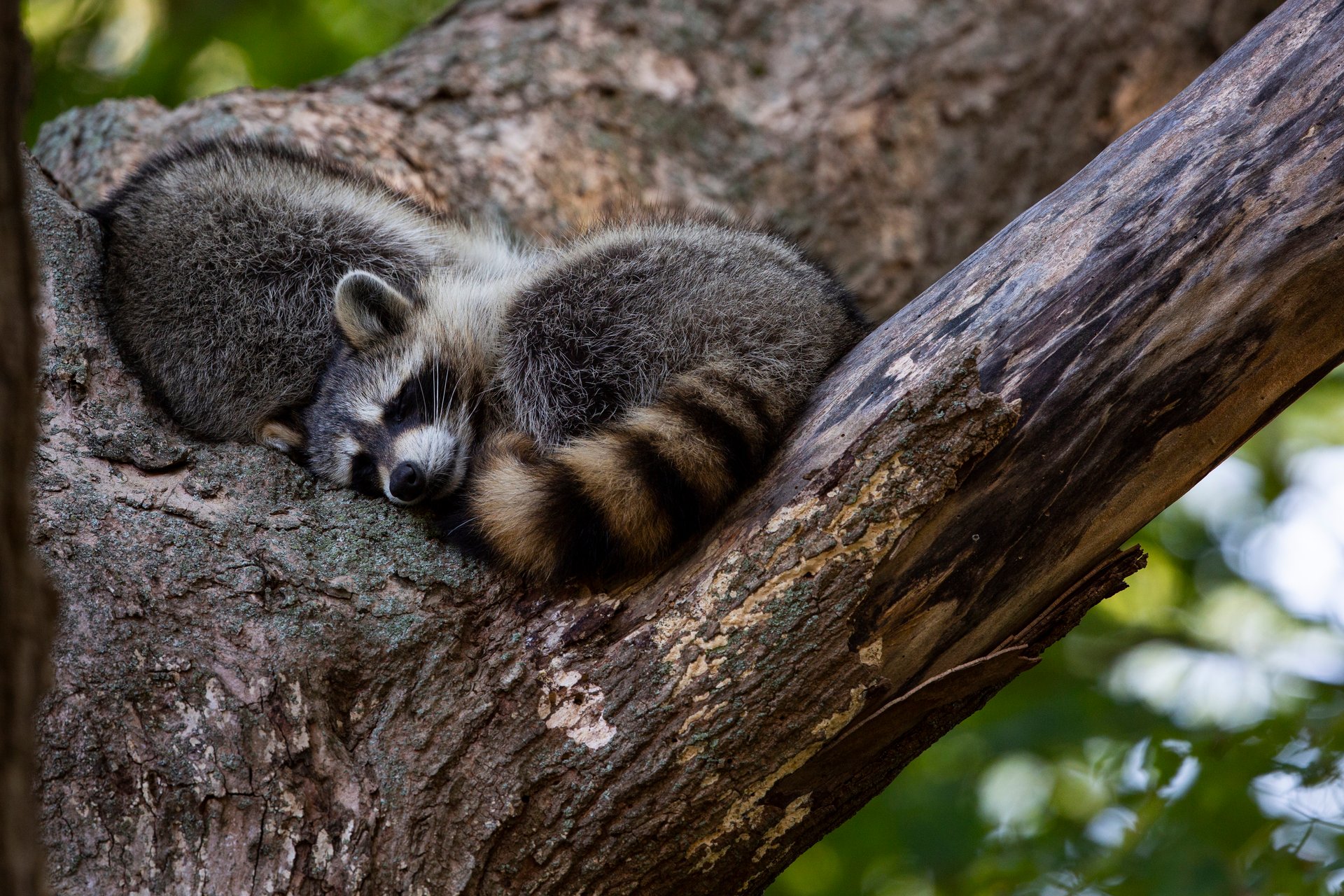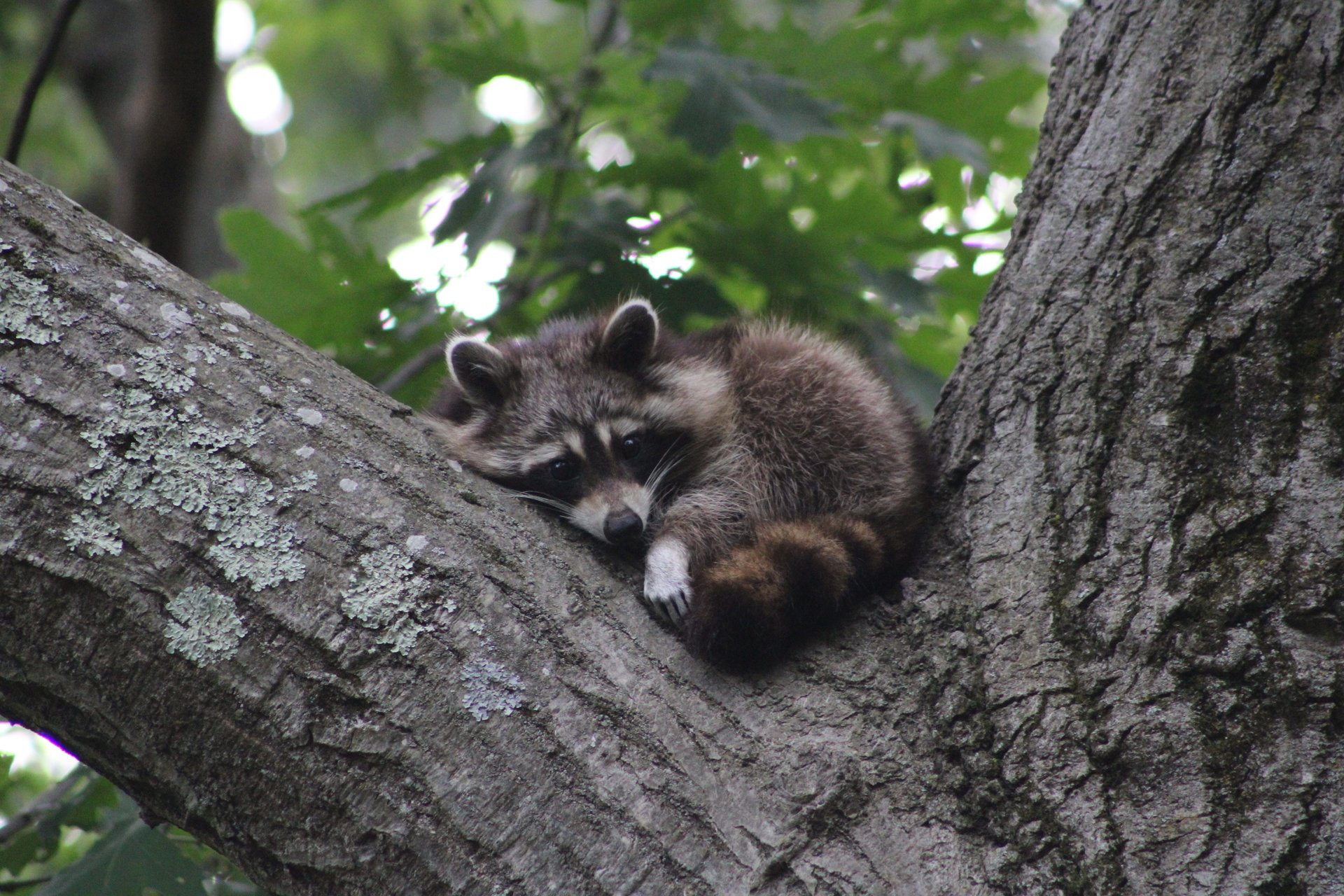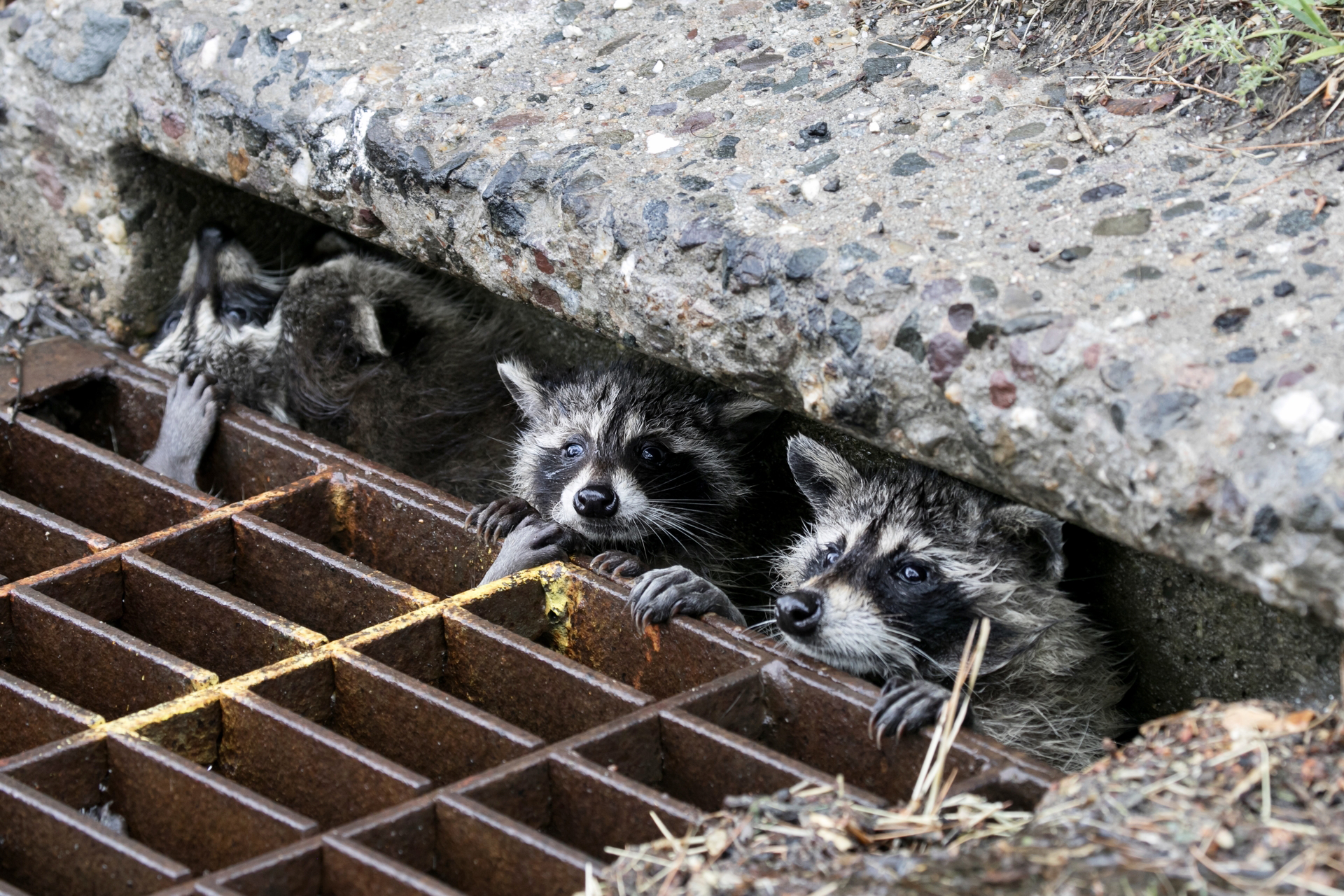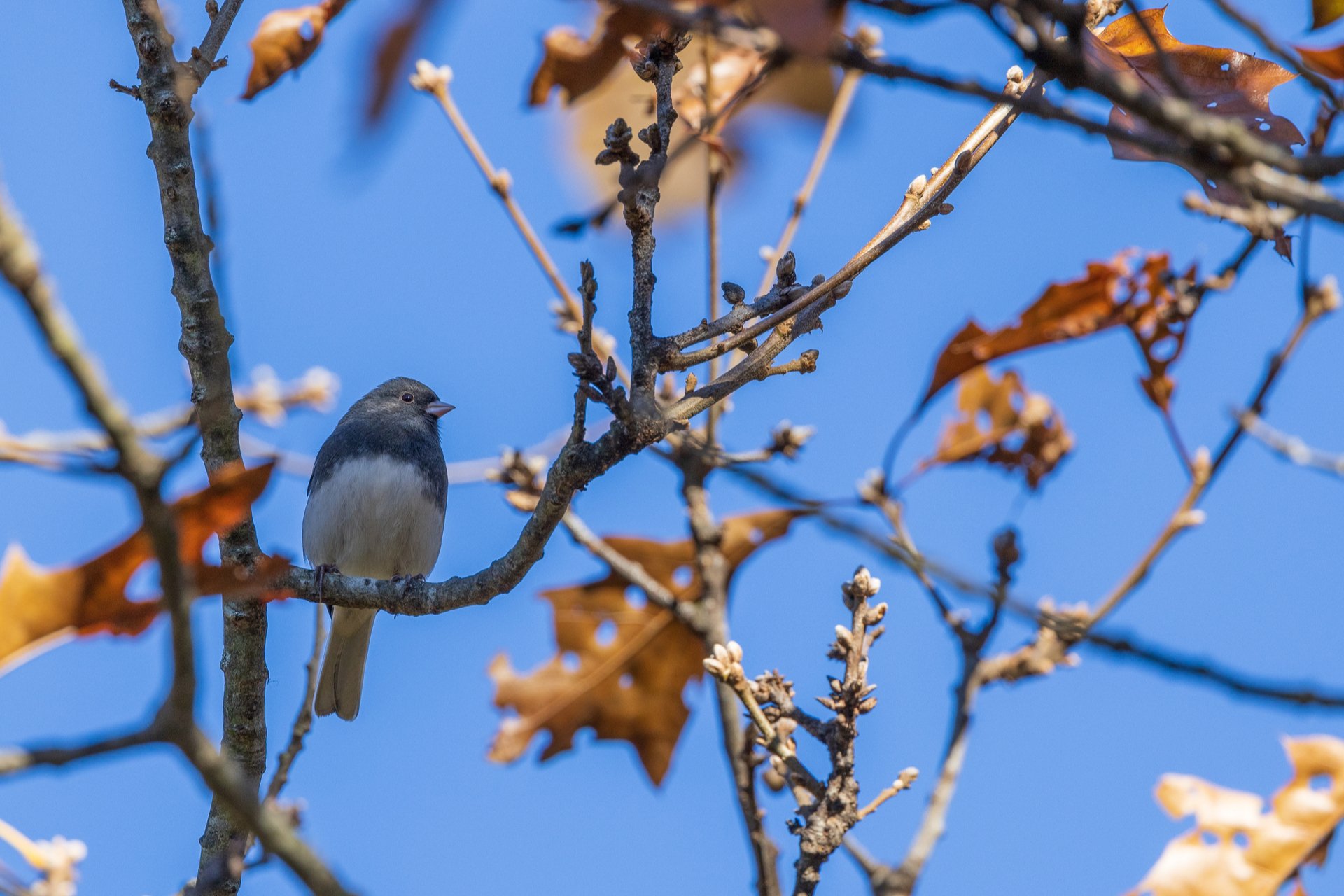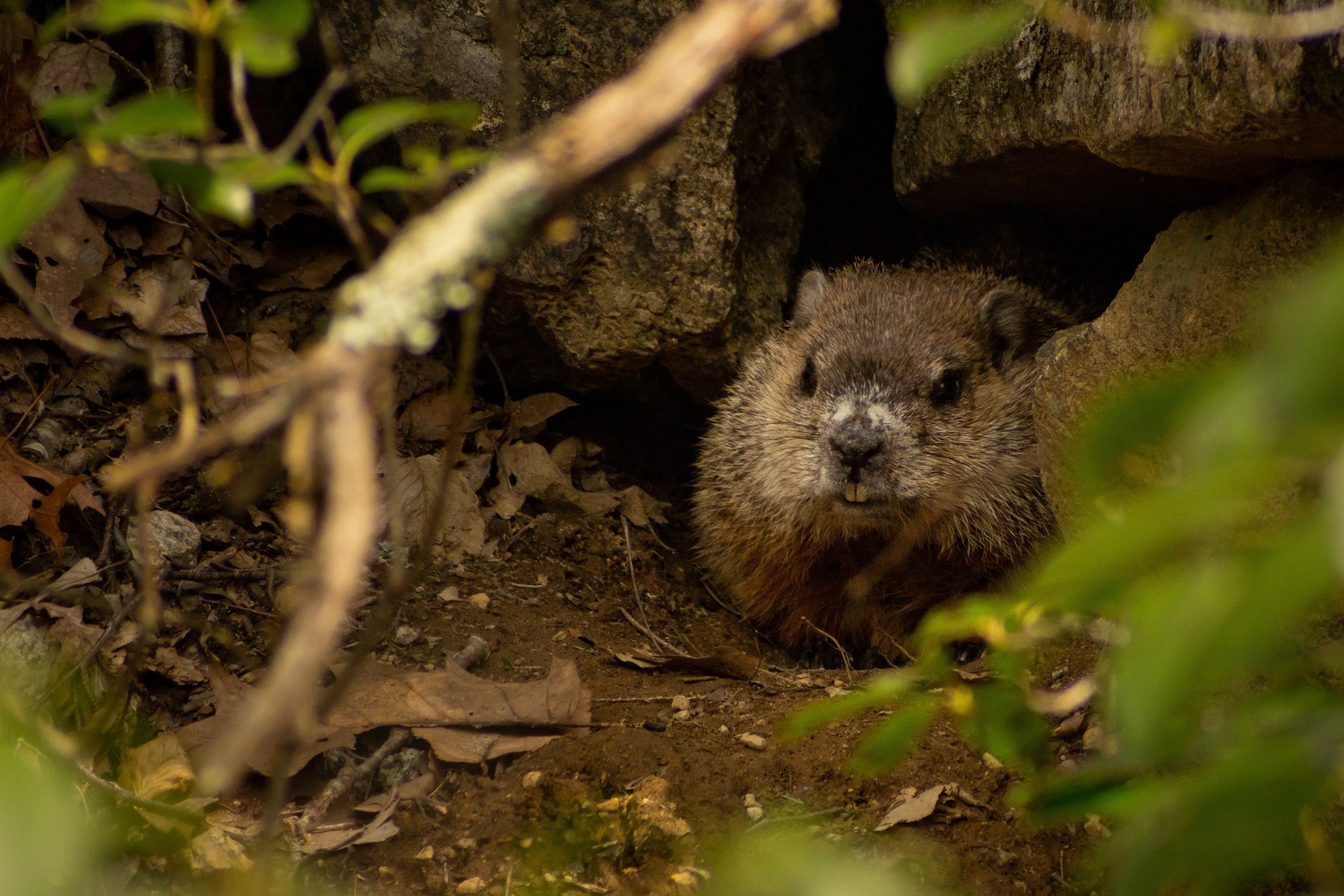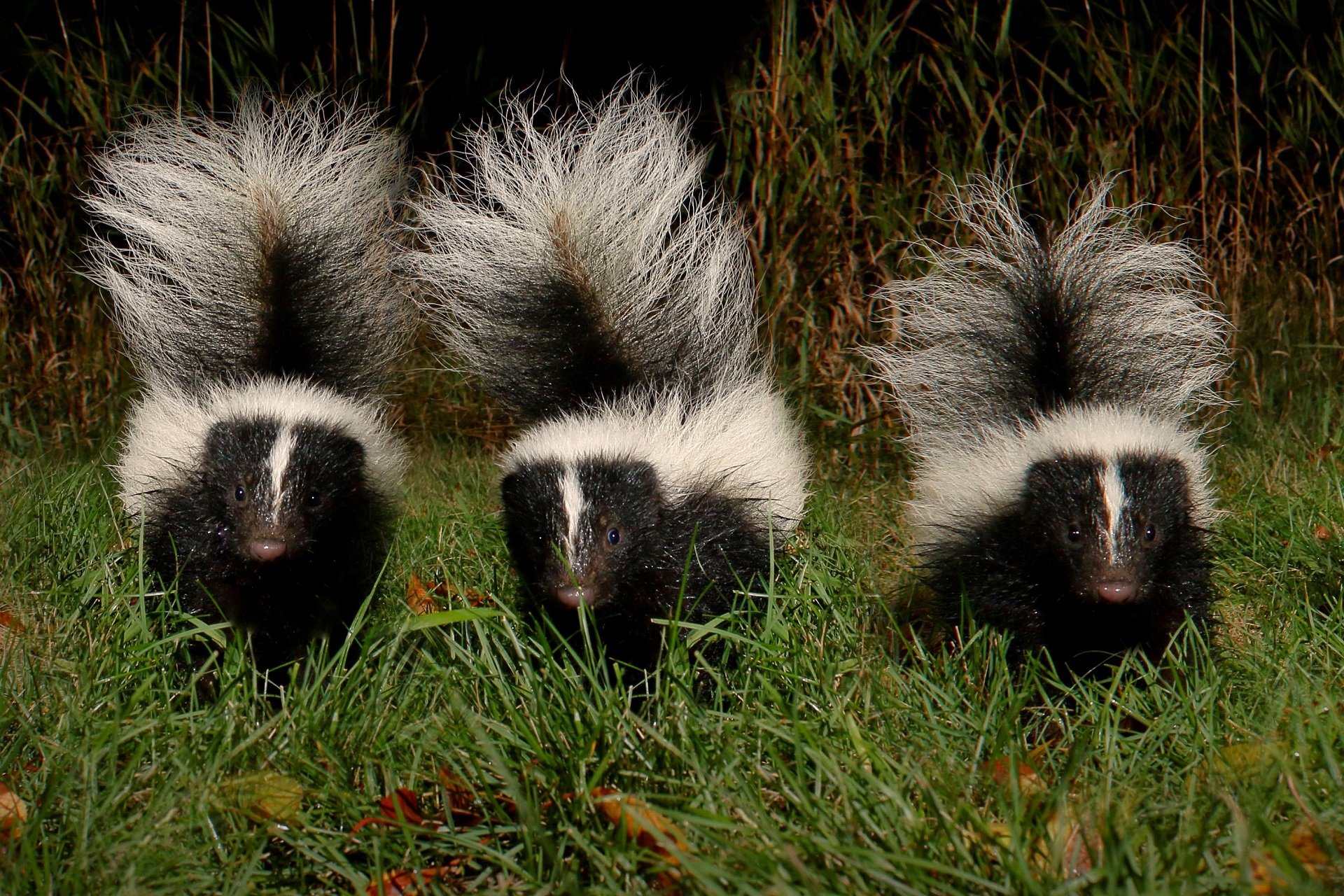Mammals in Massachusetts
Raccoons
Affectionately nicknamed bandits, raccoons have the uncanny ability to sniff out any food left out by people and have increasingly made their homes in urban and suburban neighborhoods across Massachusetts, except for Nantucket.
Raccoons are incredibly intelligent animals—they can learn from past experiences and engage in problem-solving.
How to Identify Raccoons
Raccoons are easily recognizable by their bushy tail lined with black and gray bands and a black mask covering their eyes. They weigh between 12–36 pounds and are 23–38 inches long. Tracks are distinguished by five small toes on top of the sole, in a similar shape to a human handprint. While raccoons do have five dexterous toes, they do not have opposable thumbs like humans and cannot grip objects in the same way. However, they can manipulate objects with great ease, unlike other animals such as dogs or cats.
Raccoons are most active during the mornings and evenings (crepuscular) and at night (nocturnal), traveling widely over their home territory in search of food. However, seeing a raccoon in the daytime does not automatically mean it is sick.
Raccoon Behavior
Where do Raccoons Live?
During the day, raccoons den in hollow trees, rock crevices, other animal nests or burrows, and in mild weather, they often find protected resting spots on the ground. In areas around people. raccoons have adjusted to den in attics, chimneys, and culverts.
What do Raccoons Eat?
Raccoons are omnivores, eating both plant and animal matter. During spring and early summer, they feast on insects, aquatic animals, mice and other small mammals, birds, and turtles. In late summer, fall, and winter, raccoons tend to consume more seeds, grains, and wild fruits. They aren’t very picky, either—raccoons living in suburban and urban areas often raid garbage cans and backyard gardens at night.
Contrary to common opinion, raccoons don’t wash their food to clean it. Instead, they dabble their food in water because they’re accustomed to foraging for aquatic animals and because it "feels good" on their highly sensitive hands.
Raccoon Life Cycle
In northern regions, mating season peaks in January through late March. Because the male exhibits aggressive behavior toward the young, the female tolerates his presence only during mating and rears her young alone.
A litter commonly consists of two to five young kits, immobile for the first eight weeks. Kits are unable to leave the nest with their mother as she forages for food at night. When the young reach seven to nine weeks old, the mother moves her litter to an alternative nest site.
At this point, offspring are now old enough to accompany their mother on her nightly travels, gradually learning how to find their own food. Weaned at 16 weeks, they usually remain with the mother through the winter and disband in the spring to seek their own territories.
Are Raccoons Dangerous?
Raccoons can transmit disease to other wildlife, domestic animals, and occasionally humans. Although there’s no need to panic at the sight of a raccoon walking through your yard, you should avoid contact with raccoons, their feces, and den sites. People should never keep raccoons as pets—it’s illegal and dangerous—nor should they deliberately feed these animals.
A raccoon that appears friendly and approachable may be sick and children should be taught to stay away. If you encounter a sick, injured, or orphaned animal, don’t attempt to handle it; contact your local animal control officer or police department for advice. Discourage raccoons from frequenting your home or yard by eliminating food sources and excluding them from possible den sites.
Some common illnesses that can infect raccoons include:
- Rabies: found in the saliva of an infected animal and transmitted through a bite or scratch, rabies manifests itself in two forms: “furious” rabies and “dumb” rabies. With the “furious” form, the raccoon can become aggressive, disoriented, and snap or bite at anything in its path. Raccoons with the “dumb” form are unnaturally tame or friendly.
- Distemper: Raccoons can carry both canine and feline distemper. Both are serious diseases caused by different viral agents but pose no threat to humans (although they can be detrimental to cats and dogs).
- Roundworm: A host-specific parasite that can mature and reproduce only in the small intestine of raccoons. Raccoons show no ill effects from the intrusion, but health problems could arise if the microscopic eggs deposited in feces enter the body of a non-host species.
Deterring Raccoons from Your Home
Trash cans provide a plentiful supply of food, and chimneys and attics have replaced hollow trees as popular nesting sites. Proactive deterrent methods serve as the only long-term solution for preventing raccoons from unwanted areas.
Raccoons in Chimneys
Capping a chimney before a raccoon moves in serves as the best deterrent. You can purchase caps at hardware stores and home centers or hire a professional chimney sweeper to install one.
- If raccoons are in your chimney between March and June, you likely have a mother and her young. Since the kits are helpless and incapable of climbing out of the chimney during the first eight weeks of life, you have only two removal options: Hire an animal control agent experienced in handling wildlife. They will remove the young and (after the chimney cap is in place) put them outdoors to wait for nightfall when the mother will move them to a new site. Contact MassWildlife (Massachusetts Division of Fisheries and Wildlife) for the names of agents in your area.
- Allow the family to remain in the chimney until the young become mobile. After eight weeks, gently encourage the mother to relocate by placing an ammonia-soaked rag in the fireplace and sealing the fireplace opening so the odor wafts upwards. A loud radio and bright light in the fireplace can add to her discomfort and encourage her to leave. As soon as you determine if the family has left, install the chimney cap.
Raccoons in Attics
Should a raccoon take up residence in your home, begin the eviction process by inspecting the attic for openings that provide the raccoon access indoors. Persuade the raccoon that your attic is not the dark, quiet haven it desires by placing dishes of ammonia, a loud radio, and bright lights in the room. Continue this harassment for two or three days and the raccoon should leave.
Between March and June, when a mother and her young may occupy the attic, allow her time to carry them to an alternative site. Once no raccoons remain inside, secure the openings with a metal hardware cloth (similar to chicken wire). Also, examine the outside of the building for tree limbs that provide bridges to your house.
Raccoons & Trash
Raccoons (as well as skunks and opossums) rummage through trash and compost looking for something to eat, usually leaving a mess in the process. Discourage raccoons and other wildlife by keeping trash and compost in a secure building or enclosure. (This does not include screened porches, which raccoons can easily claw through.)
Raccoons & Gardens
To keep raccoons from harvesting your fruits and vegetables, install a fence. At the edge of the garden, place three-foot wide chicken wire flat on the ground; then erect a four- or six-foot high vertical chicken wire fence on top, making sure you have a little more than two feet of exposed ground wire on the outside edge. Animals tend to start digging at the base of a vertical fence, but the horizontal chicken wire makes it impossible to get through.
How Mass Audubon Helps Raccoons
Raccoons are a vital component of a healthy ecosystem—they help scavenge decomposing materials and even help spread plant seeds with their feces. Mass Audubon is helping raccoons by protecting their habitats, building resilient landscapes, and creating a safe ecosystem where they can thrive. You can help us conserve and protect raccoons by becoming a member today.
Stay Connected
Don't miss a beat on all the ways you can get outdoors, celebrate nature, and get involved.



